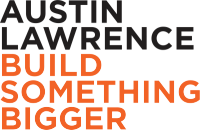As an entrepreneur, you know that the higher the return on assets your company has, the more valuable the business will be when it’s time to sell. Intangible assets can make your company a more solid investment if the buyer believes these assets will help drive sales and revenue growth.
If you're like most new business owners, however, you’re probably considering one of your significant investments as a disposable expense, rather than investments in an intangible asset.
Content marketing should not be considered an advertising expense. Using the principles of Inbound marketing (used interchangeably with content marketing here), it becomes integral to the sales success of the business by aligning sales, marketing and customer experience into a holistic approach to the market. It will generate increased brand awareness, traffic to the website, sales leads and revenue.
Content marketing, when done correctly, is different from most other marketing communications because it's intended to be a long-term effort to bring and keep buyers close to you. Inbound marketing becomes a key piece of the sales funnel when executed correctly.
Tangible Brand vs. Image Brand
Many marketers use the word "brand" to refer to a company's image, reputation, logo, tagline or "goodwill." That type of thinking about a brand leads to creating an ethereal "image" that has some value, but doesn't maximize your key asset – your unique selling proposition.
Building a brand and narrative around a USP drives revenue. That is the type of brand that makes customers believe they need your product or service, not just want it because you have the best image or reputation. Content marketing that asserts thought leadership can make it more difficult or costly for others to enter your space, and makes customers less likely to leave for a competitor.
As it emerged from bankruptcy Kodak moved from a consumer products company to a B2B marketer focused on printing and related technologies. For a division that offered software to help manage CPG and pharma packaging design and production (Design2Launch), it created an inbound marketing campaign to enhance its reputation among packaging professionals. We created and launched the Kodak website ChiefPackagingOfficer.com which is a custom published online magazine. In short order, CPO became a news and information hub for professionals in this space, becoming their go-to resource for news, ideas, trends, data and thought leadership. To learn more about the project and see the results, read the case study here.
This type of inbound marketing strategy is part of a new methodology for content marketing created by Austin Lawrence called Content2Revenue. Content2Revenue goes beyond specific product or service promotion to thought leadership (industry and profession topics).
When Kodak sold D2L, its general manager attributed much of the increase in its enterprise value, compared to earlier attempts to sell it, to the sales pipeline created through the Chief Packaging Officer project. You can hear his comments made during this webinar replay.
Making Content an Asset: Specific vs. General Content
How can you turn your brand content, and more specifically, your content marketing strategy, into a more tangible asset? By focusing on thought leadership: General education and knowledge rather than just product-specific content.
Many marketers focus brand content on discussing, highlighting or promoting their product or service. A SaaS manufacturer might create a blog with updates about the software, posts about specific features, how-to tutorials and awards the company has won. How many customers, however, are going to bookmark that blog and return because they don't want to miss the next update?
A better way to strengthen your brand and make your inbound marketing a valuable asset is to help your customers become better business people with non-specific, or non-product content. For example, a business that makes software for inventory management should make itself a partner of its warehouse, distribution, supply chain management and shipping customers by providing content that helps them do their jobs better or improves their businesses.
Our hypothetical inventory management SaaS company's blog might include posts such as, "Should you rent or buy your next warehouse?" It might curate content on its site, finding industry articles like, "Is it time to update your fleet's GPS system?" It could create a video shot in a customer's shipping center titled, "How ABC Company decreased its shipping costs by 17 percent in less than 30 days."
This type of content has nothing to do with our SaaS company's product, but it positions the company as an expert in its field. It's now a company that its customers can trust as an authority. Customers bookmark the website, opt in to the company's emails, follow the company on Twitter and Facebook and come back to the company's website on a weekly basis to stay connected to their industry. Like Kodak, it might even create a standalone web media property to carry these messages with even greater authority and distance from the parent brand.
Yes, you should feed them content about your product or service and how to use it, but you will only keep them coming back with extra content that relates to their business and will make them more successful.
Creating a Content Marketing Strategy That's an Asset
To turn your brand content into a tangible asset, work with your CMO, VP of marketing or marketing agency to create a content marketing strategy that positions you as a brand your customers and prospects want and need to follow.
Do an audit of your existing content and ask yourself, "How much of this is product- or company-specific and how much is educational?" Ask yourself how much of the content you've created the last year is still valuable and how much is now disposable?
To create a content marketing strategy that is an asset that grows revenues, have your marketing team create an editorial calendar that meets the needs of your best prospects. Use analytics to evaluate which of your existing content has delivered the best performance, in terms of page views, bounce rates, click-throughs, leads, conversions and sales. Set specific KPIs for future content, track your data in real time, and make changes to do more of what's working and shelve what's not.
You'll know your content marketing strategy is becoming an asset when you can report the specifics of website visitors that convert to leads, and leads that covert to sales. This will require more than just great content, but a change to your sales culture as well, to respond to inbound leads (a different animal than cold prospecting), and the subject of another blog to come on sales and marketing alignment for the inbound organization.
Want to explore if content can be an asset that increases the value of your company? Request a complimentary 30-minute consultation with our chief business builder, Ken Lempit.






